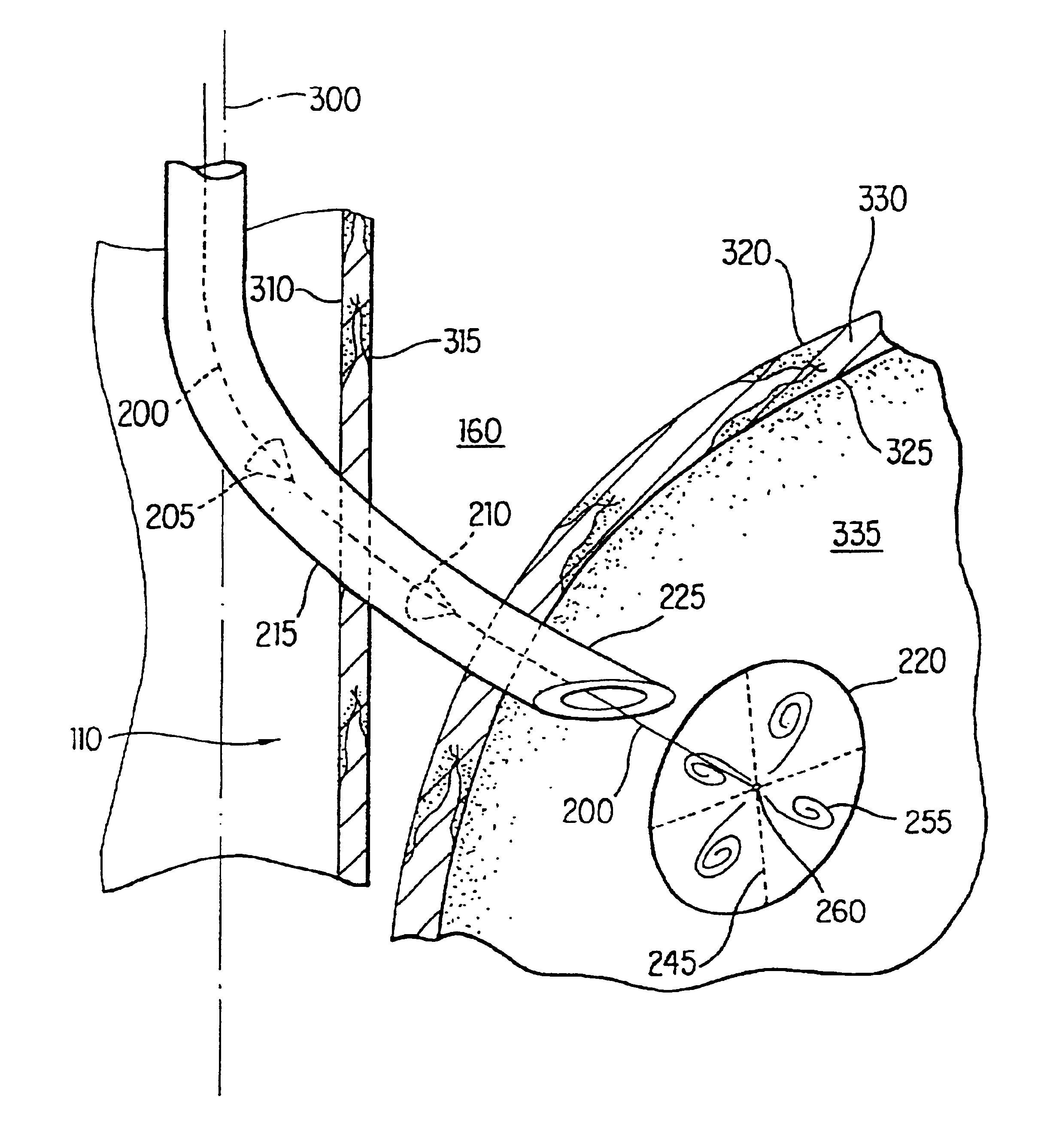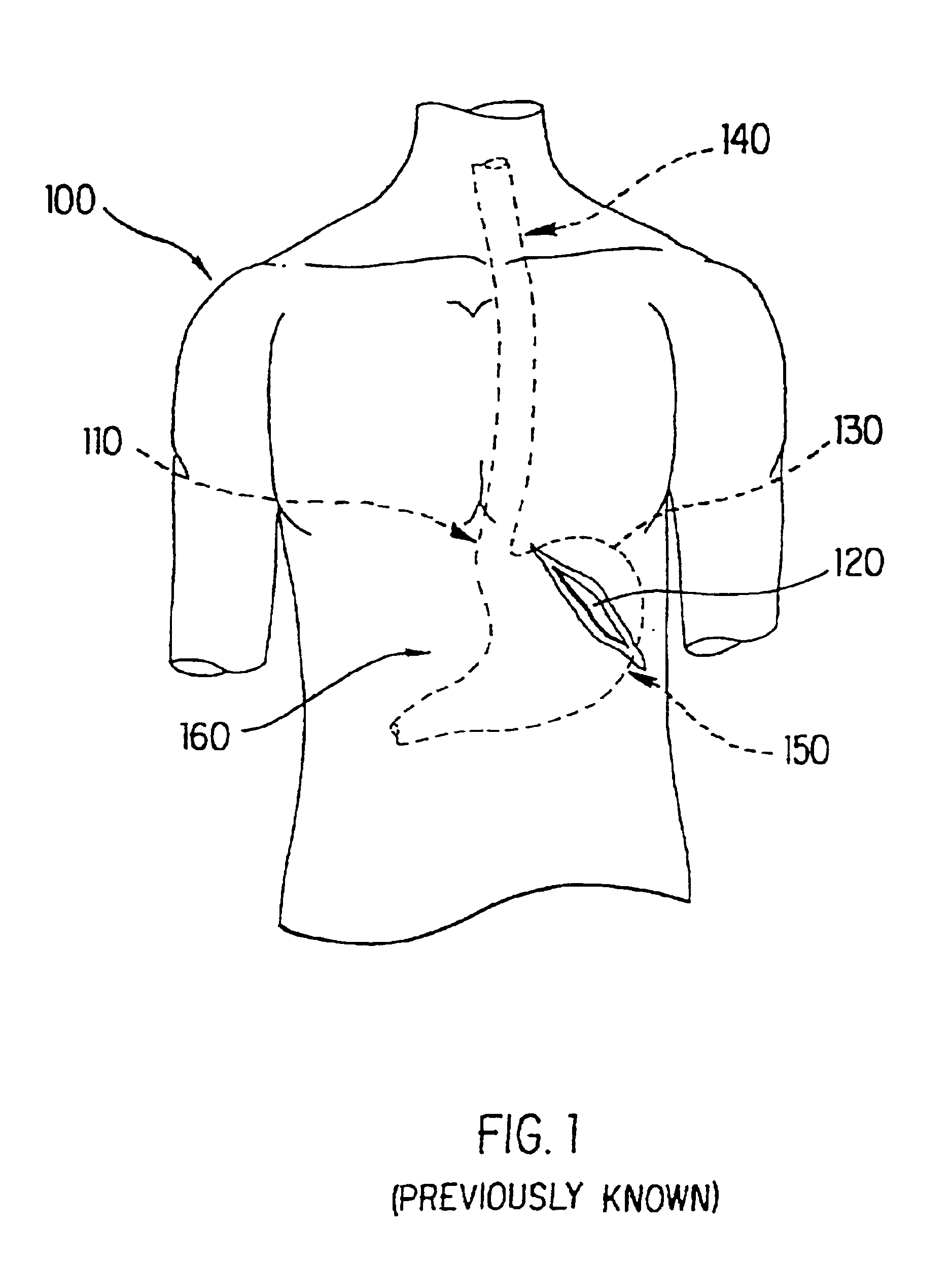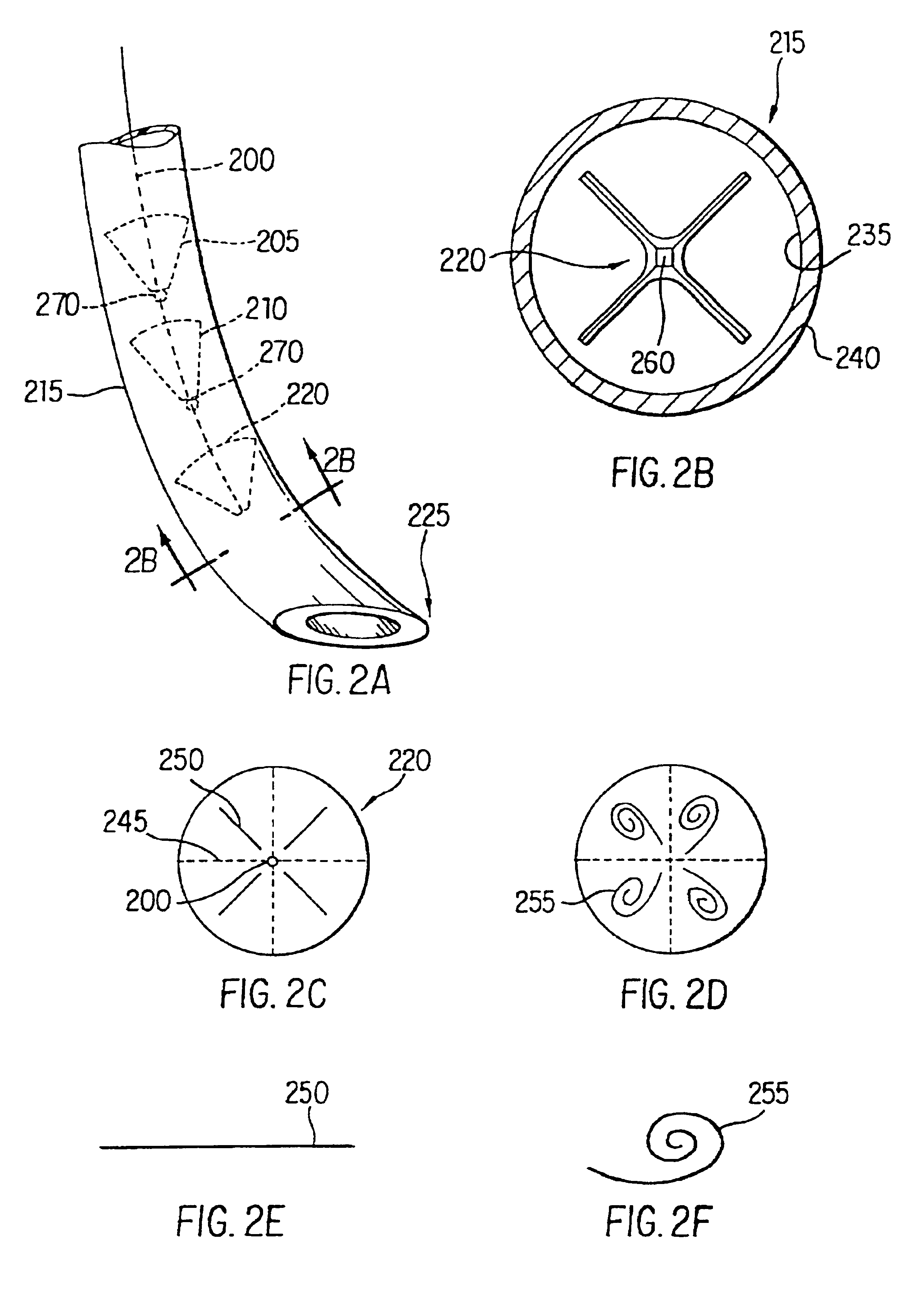Method and apparatus for endoscopic repair of the lower esophageal sphincter
a technology of esophageal reflux disease and endoscopic repair, which is applied in the field of gastro esophageal reflux disease treatment, can solve the problems of causing pain and discomfort in the esophagus, not addressing the underlying problem of the malfunctioning sphincter, and carrying along with it the usual risks
- Summary
- Abstract
- Description
- Claims
- Application Information
AI Technical Summary
Benefits of technology
Problems solved by technology
Method used
Image
Examples
Embodiment Construction
The present apparatus and method can be used in the endoluminal treatment of Gastro Esophageal Reflux Disease. FIG. 1 illustrates a patient's body 100 with an upper esophagus 140, a lower esophagus 110, a stomach 150, and a fundus 130 as is previously known.
FIGS. 2A through 2F illustrate a pointed carrier 215 with anchors 205, 210, and 220 contained therein, as employed in an embodiment of the present invention. The pointed carrier 215 has a proximal end (not shown) and a distal pointed end 225. After securing the esophageal pathway, the pointed carrier 215, which may be 50 centimeters or more in length, is inserted, by the surgeon, into the patient's body 100, down the esophagus 140. The proximal end of the pointed carrier 215 (not shown) remains outside of the patient's body throughout the entire procedure for controlling and manipulating the pointed carrier. No incisions are required in performing the procedure as access into the esophagus is gained by the surgeon through the mou...
PUM
 Login to View More
Login to View More Abstract
Description
Claims
Application Information
 Login to View More
Login to View More - R&D
- Intellectual Property
- Life Sciences
- Materials
- Tech Scout
- Unparalleled Data Quality
- Higher Quality Content
- 60% Fewer Hallucinations
Browse by: Latest US Patents, China's latest patents, Technical Efficacy Thesaurus, Application Domain, Technology Topic, Popular Technical Reports.
© 2025 PatSnap. All rights reserved.Legal|Privacy policy|Modern Slavery Act Transparency Statement|Sitemap|About US| Contact US: help@patsnap.com



